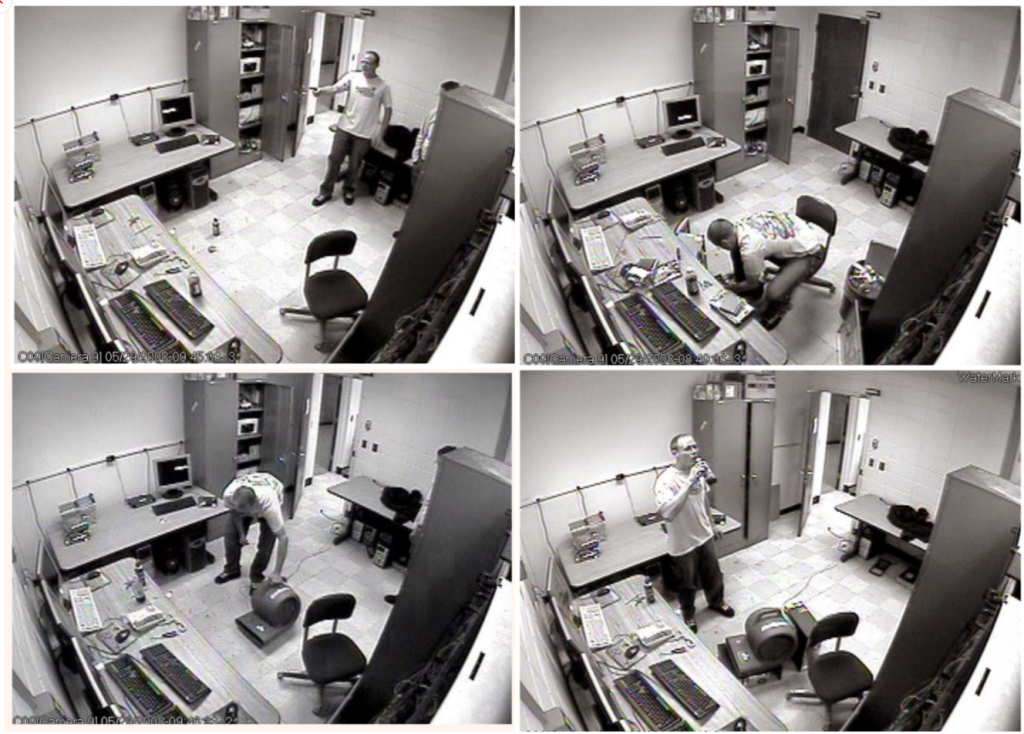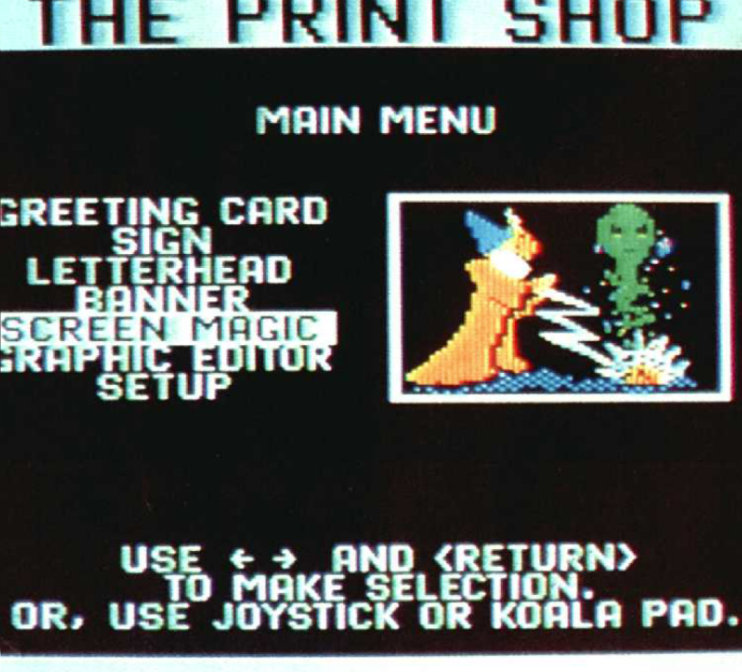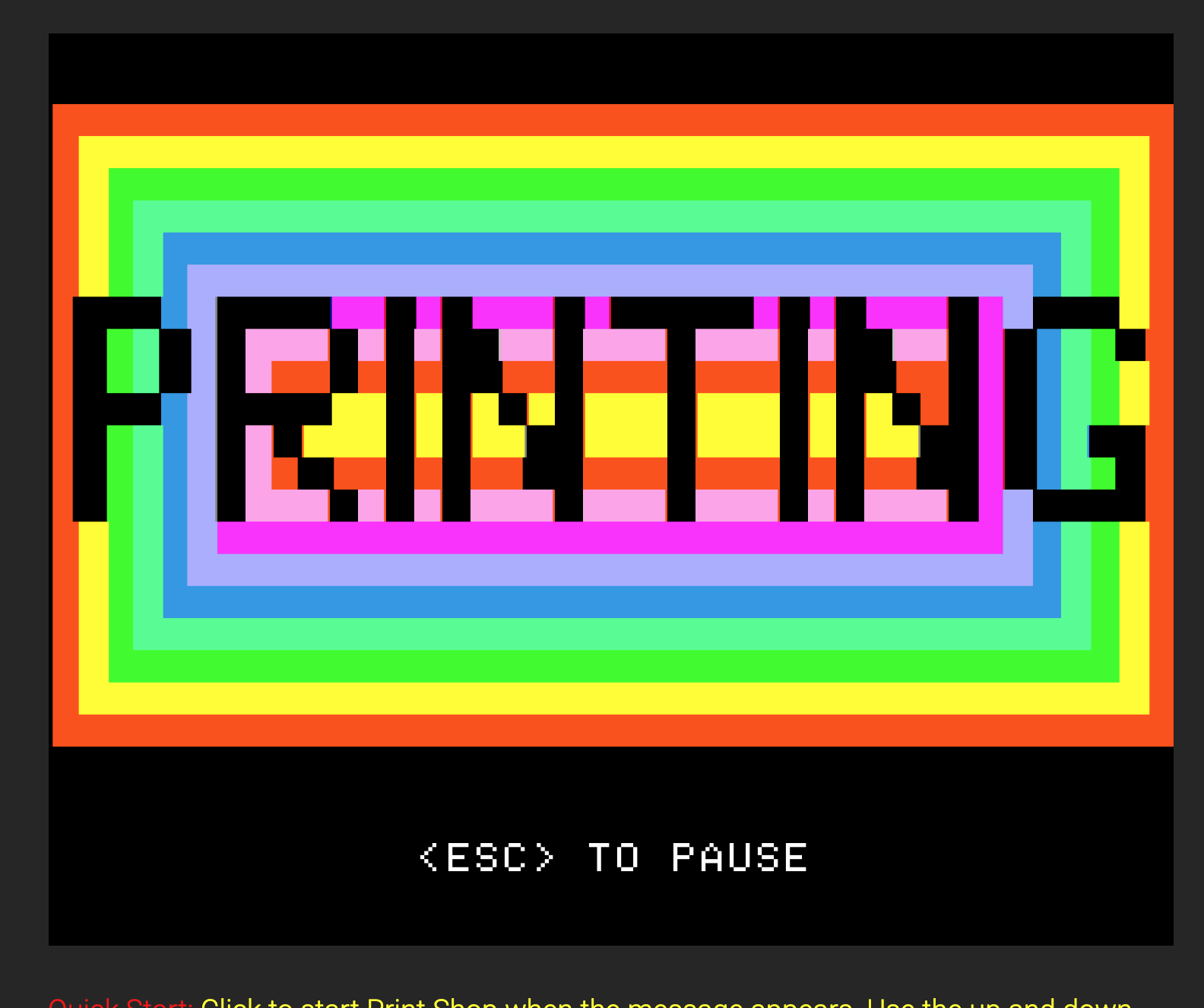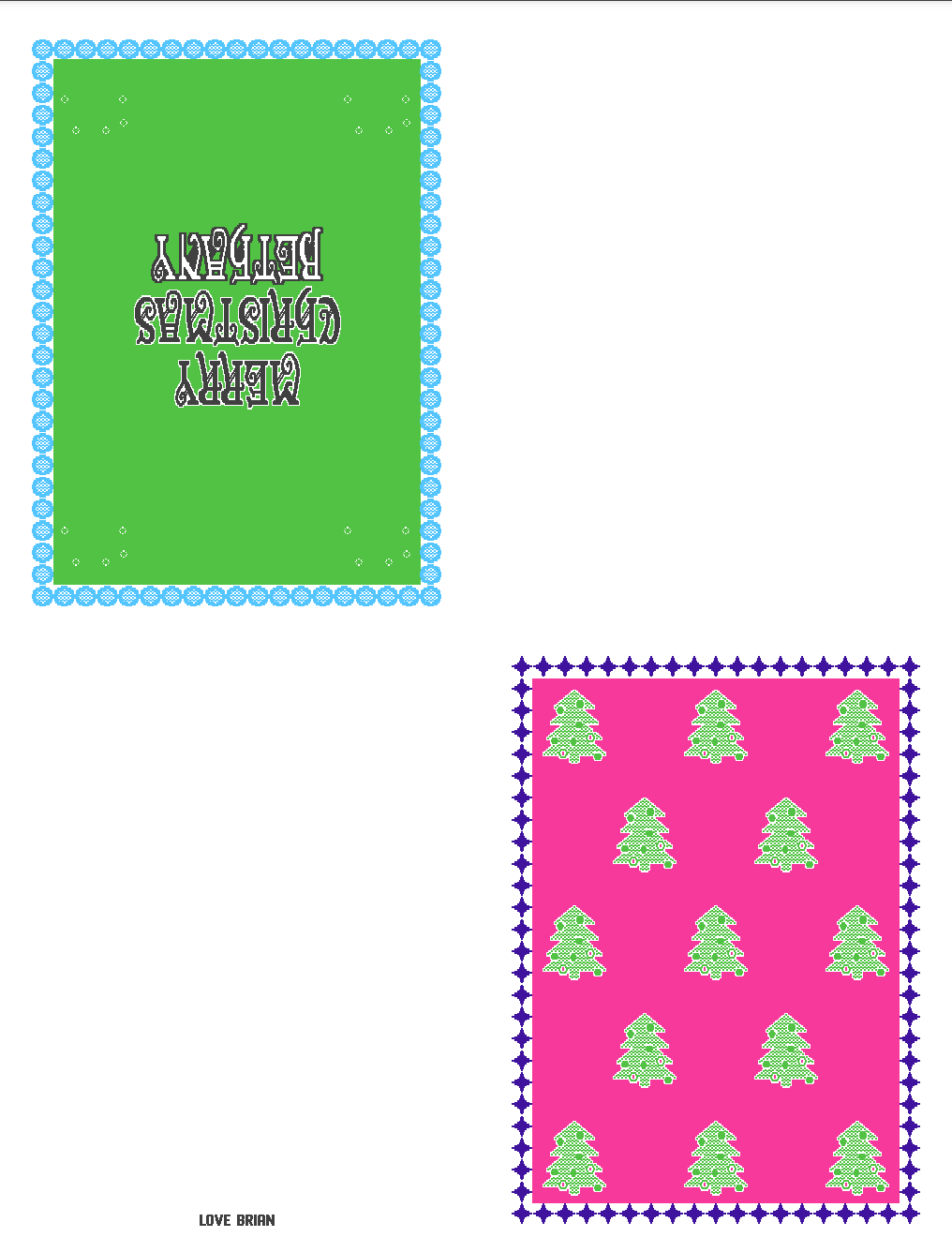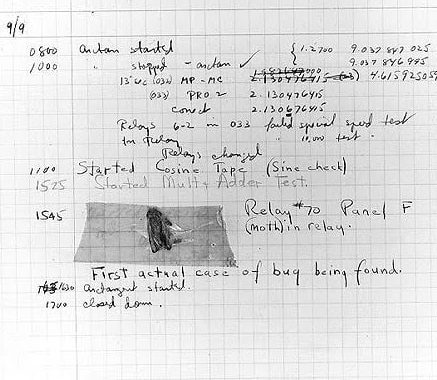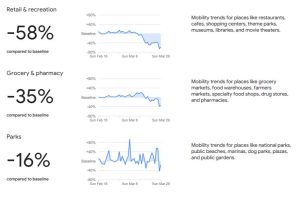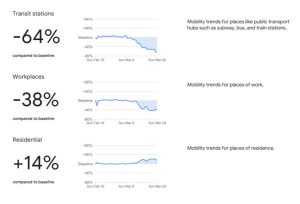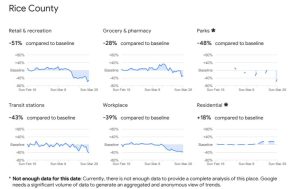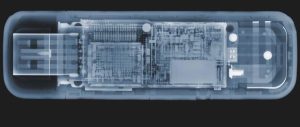I had the absolute honor to spend an evening at the Northfield Public Library with a group of scholars from Delta Kappa Gamma. Maria Brunet asked me if I could make a presentation to their group on Artificial Intelligence in Education, and I knew I couldn’t say no to Maria…I deeply respect her, and after all, she hired me! And once I found out May Bottke was an active member of the group, I went right to work!
I was hoping that my presentation would give a balanced perspective on AI to experienced educators. I admit, giving a 45 minute presentation in front of a room of college professors and primary and secondary K-12 teachers was daunting, and while I’ve used AI for both graphics and coding tasks myself, I needed to make sure my presentation was very relevant to education specifically. I am so pleased and proud to announce that it went extremely well. After about an hour and 20 minutes, and many fascinating questions and insights from the group, I wrapped up the presentation!
If you’re interested in checking out my presentation in its entirety with the slides, I’ve uploaded it to Youtube for your pleasure, and you can watch it below. Below that, there is a downloadable podcast MP3 version that you can download to listen to on-the-go. I’m eager to hear your insights as well!
Detailed Transcript
Maria Brunet: You know, I came to Faribault in, oh, in 1995 and was when we were just starting to put all the computers in and the computer labs and TVs in the room, and Denny Thompson was in charge of this technology. And the first person we hired was Brian Klier. He had just graduated from high school, and we everybody knew how good he was in technology, and here he is. How many years later? Well, almost 30, almost 30 years the district is so lucky to have someone with his skills. He’s just always been outstanding, and he was wonderful to work with all those years. So it was really when I asked him, and I told him that May Bottke, he was one of our members. He said, I’ll do it because he loved May so much. So I talked to her today, and she said, Oh, tell Brian Hello. And she said, my arthritis was too bad to send my birthday card this year. His birthday is March 11.
Brian Klier: But I’ve received birthday cards the last two years, so I’m not a bit upset about that. I was delighted each and every time.
Maria Brunet: So Brian said he’d be glad to talk to us for a little bit on artificial intelligence and education, which is a topic everywhere, right?
Brian Klier: You bet.
Maria Brunet: Thank you.
Brian Klier: So what Maria didn’t say is that the other reason that I wanted to do this so much is because Maria had asked me to do it because I respected her very highly at the at the middle school, and it was, it’s a delight to see Maria again here. It’s been a long time and well, we stay in contact and on Facebook and all the other computer resources that are out there.
So it’s wonderful to be here Delta Kappa Gamma. And anybody else from I think this is probably just Delta Kappa Gamma tonight, right? Or is there anybody else?
Okay, so we have a couple of other people from Northfield, wonderful. Well, go right ahead if you’d like to.
Bruce Morelan: I’m Bruce Morelan, retired professor or instructor artificial intelligence, one of my fields. I’m excited.
Brian Klier: Bruce Moreland, I’ve heard that name before, too. I don’t know where, but I know I’ve heard that name before. Fantastic.
Well, the challenge for me creating this, as I was telling Maria earlier, is I’m a tech guy, kind of a jack of all trades for Faribault schools. So I come on more of the techie side of things, and I use AI for coding and a lot of other things. So my challenge when it came to deliver this presentation is I want to make this relevant. And so I talked to teachers, I surveyed teachers, and I wanted to find out exactly what they’re using it for. At Faribault, I wanted to know what keeps them up at night when it comes to AI, because obviously we’ve all, we’ve all thought those same things. We know it’s probably a good tool, but some of us are just scared to use the tool, and then some of us are just going hog wild, and use it every day for everything. So AI is absolutely everywhere. Staff Development in the school districts. Faribault is no exception from that. Elon Musk wants to turn X into a launch pad for it. So whatever that means, I guess he’s thinking that AI is going to be big too. And of course, he’s using it for Teslas, for the self driving things with mixed results.
Every single month companies…the development is just exponential.
If AI doesn’t do something that you wanted to do, like last month, try it. Try it this month, and you’ll be surprised when it comes to coding with Google. Last month, it was completely terrible. I couldn’t get any decent output out of it. This month, it’s writing complete, complete programs for me with very few modifications. Still have to use the old brain a little bit to debug some of that stuff, because it doesn’t come out right all the time. But then sometimes it surprises you. It’s just, wow, that’s exactly what I wanted.
So, I don’t want to be an advocate for AI necessarily. Tonight, I’m not going to push AI, but it’s at the same time, it’s not going away.
There are benefits to using AI in education, and of course, there’s challenges to using it in education. So my goal tonight is to inform and explore some of these options with you and allow you to draw your own conclusions.
Thought this would be an interesting question. Who here has used a slide rule during their education at all. Ah! So did you actually teach using a slide rule, or did you just use a slide rule? Okay, all right, I that’s kind of like, Ah, okay. I have no problem with a slide rule. We made it to the Moon using a slide rule. So, so no problem there. So throughout lives, we’ve witnessed this shift in technology, from slide rules to calculators to computers to the internet, each with its challenges and makes our heart beat fast, sometimes, because what if the batteries go dead in the calculator? What if the disc stops working, or what if the computer crashes or the internet goes down?
We can’t discard AI because of our fears.
We don’t discard mathematical understanding either. When calculators came around, still need to know how to do those problems, because what if a calculator isn’t around? But we learned to use all these as tools. The same mindset applies to AI, but we have to be discerning about its use.
So that’s me in 1981 at the age of three. Here I’m standing in front of a Commodore PET 2001 series with a model 33 teletype next to it. And this is similar to the kind of computer that you’d find at Lincoln school in Faribault, when I was in first second grade. We had Commodore pets. They didn’t have the really small keyboard or the built in cassette tape drive like that one does, but they had a cassette tape drive on the side, and they had a bigger keyboard, so it’s a little bit easier to use, and it had a green screen instead of a white screen. So, I’ve been doing this stuff for a long time, thanks to my dad primarily.
So I went to the Faribault public schools. I graduated in 1996 and then I went to South Central College. I took one year at South Central College, post secondary enrollment options, and then I graduated from South Central in 1997 and this was much the chagrin of my guidance counselors, because they were pushing me to go to college. They’re like, I mean, you kind of got the feeling that you know you’re wasting your life, Brian, if you don’t actually go to a college. But the landscape at that time was very unusual for technology, because it was just at the beginning age of the World Wide Web, and colleges were still teaching COBOL and Fortran,
and so I was thinking, you know, I don’t know if they’re going to teach me what I’m going to need. The information superhighway, all that terminology that was going out at the time. Everybody thought that the internet was going to be the next great, big thing, except for a couple of news newspaper articles, I think, over the United Kingdom that were saying, Oh, this is going to be it’s just a fad. It’s going to go away. But I personally thought building web servers and learning HTML and different web based languages was a better use of my time and learning about computer networking and all that stuff. So ended up being a pretty good decision for me in the long term, because I’ve been at the Faribault public schools now almost 30 years. It’ll be 30 years this coming summer. Started as an intern in June of 1995. I was helping Maria and Char Wetzel, one of our elementary media specialists, we were typing in the card catalog cards into the computer to build the first electronic card catalog for the school district. So I started with that and did other summer projects. Also worked as an intern for, you know, just doing, doing website based things for the Faribault schools as well. Finally, they hired me on in March of 1997 thank you to Maria, which was on the interview committee for that. So thank you.
But I’ve got a chance to see the transition from sneakernet. What we called sneakernet was got sneakers, you walked over to a computer, you put in disks, and that’s how you updated things. So we went from that to CD ROMs to VHS tapes to DVDs, and now we have video libraries like Netflix inside our school district, our own in house Netflix that we use for curriculum and education materials. So instead of having to call down in the media center and have them push a button or put a tape in. Now they just go basically through Netflix and say, Yes, I want this today. This is what I’m going to be showing, and it just plays it and it played over the projector. It’s amazing.
I’m also involved in Rice County Skywarn. I don’t know if anybody’s heard that or is aware of the Skywarn program, but I do probably all of the social media stuff for Skywarn, but but not quite all the dispatch. We do have a team, and we’ve got 144 storm spotters now. We’ve built that program up quite a bit, so we feel pretty good here in Rice County for that.
So what is AI?
All it is is sophisticated pattern recognition,
Because we teach these computers by feeding them massive amounts of data. A lot of this data is on the internet already, and it learns to identify patterns and make predictions or generate new content based on those patterns. It’s basically all it is. So that’s generative AI, and that’s what I’m gonna be focusing on today.
AI that can create something new, like code, images, lessons, essays and so forth. So it’s not just about analyzing data, it’s actually about producing output or new things.
There’s also general AI, which is like HAL9000 and we’re not, we’re not there yet. AI can’t outthink humans. It’s not gonna take over the human race or anything like that, at least not yet.
So most of you are aware of the two big Gen AI systems that are out there right now. There’s OpenAI has ChatGPT, and then Google has Gemini. Those are the two biggies.
Both of these products have APIs, and those are application programmer interfaces, so that allows third party pieces of software to plug into it. That’s why things like Canva and many other education tools, say, hey, we have AI now. Well, they, they don’t, you know, they actually didn’t invest all that money to do their own AI. They’re farming it out and then bringing it back into their environment. So, but those are the two big ones. And yes, they get charged money every time you use AI when you get that API.
What’s the hardware that makes it possible? Well, I couldn’t take my actual GPU out of my computer. They don’t really don’t like static electricity, so I wouldn’t be able to really pass it around or anything. So this is a box, but Nvidia has a 92% market share with 92% market share with GPUs. GPUs…graphics processing units. So it’s like a CPU, except this is really, really, really good at doing math and things like fractals and patterns and textures and graphic related things. Gamers. You got grandkids that game on a PC, they’re going to have one of these in there, because that makes everything buttery smooth, realistic on the screen, and everything this is what makes AI possible, also what makes Bitcoin mining possible, if you’ve heard of Bitcoin mining.
So why is all this relevant to us as experienced educators?
Well, it’s understanding that you have to understand this. It’s crucial to be an informed citizen. It impacts how we access information skills future generations will need, and it helps us engage in informed discussions with friends and family, and it makes us seem smart to the kids too, if we can say, you know, talk about AI a little bit and seem relatively informed about it.
So..lots of, lots of potential positives on AI.
Personalized learning. So Faribault is a very diverse environment, culturally, extremely and income wise, we’ve got 80% free and reduced lunch in Faribault. We’ve also every culture you can imagine.
So one of the challenges for teachers is differentiated instruction. You’ve got this smoresgboard of kids in your class you can teach to maybe 60 to 65% of them traditionally, and the rest, you got some that are laid behind you. Get these two students here that are smarter than everybody else, and so they’re blowing the class away. So how can you make, how can you make your instruction custom to everybody? AI can help you do that. And I’ll get into a little bit of that later. So just an example. Imagine an AI tour that adapts to the speed of your student learning. If they can offer additional examples if they’re stuck, maybe examples that are relevant to them in their life. When you get to know the kid, you get to know a little bit about them, maybe more challenging material for the gifted kids
Provides instant feedback. Google has a system called read along. It’s relatively new within the last year or so, and you use a computer plugged into a mic, and Google listens to a kid reading a book, and then it offers suggestions on how the kid can improve, or if it messes up a word, or whatever like that, it’s there to correct. So again, it’s called read along. readalong.google.com, that’s one word, readalong.google.com, so interesting. Again, this tool, free tool, kind of cool.
AI can also be used as educator assistance, and this is a big one. As an educator or anybody really try to come up with an idea, and you’re sitting there with a blinking cursor on a plain white screen on your computer, and you’re like, Okay, how do I get started here? What do I even want to do? So AI can inspire this brainstorming with lesson ideas, it can help you draft routine emails to coworkers and parents. It can even help create quiz questions for you.
So it gives you that inspiration. You can ask it. You’ll just give me a couple of starting ideas. This is what I kind of want to do with my lesson Give me, give me a few ideas of how we get started, and sometimes it just is a nice launch pad for you to get to come up with your own ideas. Kind of a kick start for us. Our brains don’t want to start all the time, and it’s getting worse for me. I can tell you that as I get older.
The other thing is accessibility.
Many of us use accessibility tools. AI improves them, text to speech for the blind. My sister’s blind. It’s the text to speech you get out of AI is almost indiscernible from a real person, complete with the breaths in between. You’ll get a if something appears to be funny, it might do a little chuckle. I mean, it’s it kind of blows you away. Students with reading disabilities, speech to text, For those that have struggled with writing, it can help with that. Translations. Traditional translations, have always translated a word or a phrase, and it’s tried to come up with the best way to translate that into another language. So with AI, it can think a little bit deeper. It can it can try to figure out what the context of what you’re saying, or you want it to translate, and then it can come up with a better translation for you. So that’s another good tool.
I’ll come up with a sample a little bit later here on the text-to-speech offered by Google, because obviously the teachers I surveyed aren’t available to come here tonight, so I made AI representations of these teachers so for you to listen to.
And finally, engagement, with a caveat.
It can ignite student creativity in the same way it can start stories. It can debate topics, basic visual outlines of projects. But the key is, with guidance. With guidance, it’s a starting point. It can never be the final product.
Okay, so here’s the reality check. It’s not a magic wand. AI is not a magic wand. Before any staff or student uses it, they have to know about the pitfalls and the concerns about using it.
The first one hallucinations. How many have used AI and have had it hallucinate on them before?
Okay, do you have a story to share? Any recollection?
Bruce Morelan: I have a simple one. I’m a medical researcher, so I know what medical abstracts look like. And I asked ai chatgpt to write an abstract for me on a medical statement that I knew was false. And chat knew it was false too, so I did it again, but with a slightly older piece of information, and it was quite happy to write me an out of date abstract with four references, all in beautiful, abstract form. None of the references were real. I couldn’t find the authors the proposal, you know the people are supposed to have written these papers, they weren’t even out in the research literature. So and I did that three times.
Brian Klier: Perfect segway, because I have in my notes, AI can generate information that sounds perfectly plausible but is completely false or nonsensical, just like that. So you have to run the content through a common sense taste test. You are a human. You’re going to want to fact check the output. You can’t take it as gospel. Really important.
For critical thinking.
Calculator effect, all right, so there’s a real risk, and if you rely too heavily on this AI stuff, you’re going to forget how to do it for real. You use a calculator too much, you’re going to forget how to do the arithmetic by hand, right? So that is a certain consideration with using AI. We want it to support thinking. We don’t want it to replace thinking.
Another one is bias and equity. AI models learn from data that they’re trained on, data that humans create. Humans are biased beings. If the data reflects things like racial, gender, cultural or even geographical biases, AI can learn and amplify these biases in its output, which is a major concern.
So the other thing is, why are these tools offered for free to us? They cost these companies millions, 10s of millions of dollars to produce. So why are they giving it to us for free? Last month, OpenAI, the company that makes ChatGPT, said that their users are saying please and thank you to these models. You know, like humans would do, to be polite, please. Can you get it? And thank you. That’s very good. That costs them 10s of millions of dollars a year in extra processing power. So if just being polite costs these companies 10s of millions of dollars, how much do you think it costs them to do the actual calculations and what we’re asking for, and that’s not to mention the electricity that it costs to run all these GPUs.
And I mean, they these companies will charge money for their professional versions that allow you to, you know, talk to it more often. But still, are these companies running this stuff at a profit, or are they running it in the hole yet? Real consideration, because I don’t have the answer to that question, why is it? Why? Why? Why is all this stuff free? What’s the how are they going to monetize this? I guess is my thought.
So the other ethical dilemma is, when does AI cross the line from assistance to cheating for students, where is that line?
How do we ensure academic integrity or data privacy? I mean, when you type a prompt in AI, where does that information go and how is it used?
Is it just private between you and I? Are they going to go and can somebody else ask what you asked it and get another or get some of your information, they do pretty good at trying to separate that, but we just don’t know.
These are complex questions that schools are grappling with right now and society, for that matter.
The other thing I noticed is that sometimes staff send out emails that seem rather unorthodox, maybe not in their style.
So I have this thing with one of my co workers I’ve worked for, for work with for a long time, and we say, oh, that email, I’m going to run it through my washing machine. So I go to a couple sites, or one of them is zerogpt.com, the other is gptzero.com, and these try to detect if people are using AI to write something, and we have administrators of every level, and teachers that they send out an email, and it’s nearly 100% AI generated.
Is that ethical? Is it ethical for them to do that? Or if we, if we put it in a frame where, well, that enables them to spend more time with students and the real problems that we have here instead of sending out emails? Now, is it ethical? I don’t know.
So people know that people do this, but really don’t want to talk about it either. They just kind of let it go. But you see more and more of the content in the schools that boy that doesn’t sound right, you know, there’s no spelling mistake, you know, you some people you know are form your paragraphs in a certain way, and all of a sudden, well, it’s a perfectly formed paragraph or a section of it’s a slightly different font. Oh, that’s strange stuff like that.
And the other thing is, if you ask AI a very leading or poorly phrased question or ask it an opinion on a ethical issue of some sort, its response can be completely over-simplified, biased, or even completely unhelpful.
So anyways, you have to carefully prompt it, and you have to use critical review when you use this tool.
And probably, out of all those things, the most important part for us as educators is that, and I’m going to try to read this verbatim, because I think it’s important: AI cannot replicate the empathy or the mentorship or the nuanced understanding of individual student needs, or the inspirational spark that a dedicated human teacher can provide.
I think that’s the important takeaway here is that we can’t let it become teachers.
So, I surveyed actual teachers at all levels at Faribault as well as one of our charter elementary schools, and I asked them these questions, has AI made it easier for you in the course of your work? Are you concerned about inappropriate uses of AI? Do you think teaching students about AI is responsible? Do you allow students to use AI for your assignments? And have you changed the way that you deliver your assignments, quizzes or tests in hopes to prevent students from using AI to give canned responses to them?
So I like the teachers to speak for themselves here. Well, almost…
The first from a high school chemistry teacher: “it is a real time saver to create meaningful questions that pertain exactly to the topic that I am teaching.”
Okay. Then a sixth grade math and science. “I have used both chat, GPT and Gemini for school. I’ve used it to help create some lesson plans, study guides, tests and some activities. I have also used it to help craft messages sent to parents.”
Okay, finally, a family and consumer science teacher at the high school. “Yes, it has made my life easier. I also like using it to help build rubrics. It saves a lot of time. As creating rubrics is a time suck.”
Can’t get over how good that text to speech is. I mean, it’s, it’s not the Stephen Hawking, you know, robotic voice that we had with the original Mac and stuff is it’s way better than that.
So correlation is almost all teachers across the district at all grade levels and subjects who have used AI, report using it to generate lesson plans, quizzes, worksheets, activities, rubrics and their communications. So this is the most common positive application at Faribault, anyways. It’s a time saver. Allows us to quickly produce tailored materials for topics, grade levels and even individual student needs. So using AI as a teacher’s assistant was one of the takeaways that I found when talking to teachers.
The second takeaway is that there was a widespread concern about inappropriate student use. Again, not surprising here.
So I talked to four, well, I chose four comments from four teachers, and we’ll just get started. Starting at the top. “Just yesterday, a student came up to ask me a question about his class, and he had a split screen on his iPad with Edge annuity on one side and chat GPT on the other. I was like, Really, you didn’t even close out of it before you showed me your iPad.” They just think it’s the right thing to do, right? Why can’t I use AI? Right? I don’t know if the student was unaware that a boundary existed there, or if we just need to do a better job of informing students you know how they should be using it.
So business and marketing teacher: “I am concerned about inappropriate use of AI by students. I have seen multiple students copying and pasting multiple choice questions and answer options into Google so Google AI can answer the questions for them.” Yeah. Again, another teacher that sees it.
An industrial technology teacher: “I’ve also had a student say they can use AI and then run it through an AI checker and/or Grammarly to get around detection. That is concerning, because they are not learning the content at that point.” Yeah, sure. So students are students are going to do, and that’s they’re going to be smarter than us. I was that one kid once, not anymore. Now I’m playing catch up.
And then a seventh grade American Studies student, teacher I mean. “Students using AI is something that I am definitely concerned about, and have not really figured out the best way to navigate it yet.”
So nearly every teacher surveyed worries about students using AI to complete assignments without learning they’re plagiarizing the content or having them find ways to bypass the AI detection.
So the necessity of teaching responsible AI use. So teachers know that we need to teach it responsibly. But is it really taking place?
Here we hear from a sixth grade math and science teacher: “I think teaching students about AI is responsible and very necessary. AI is not going away, so it is important for us to help students learn how to safely and responsibly navigate AI use.”
Okay? And then a middle school perspective, another Middle School perspective: “I think it’s irresponsible to not teach them about AI. It is a tool like spell check or a writing template or sentence frames. They just need to know how and when it is appropriate.” Yeah, right? If it’s a spelling test, we probably should let them using spell checker on things, and same way as if we’re doing something that you know requires, or maybe, maybe you want to let a student use AI for a certain project.
And then finally, an elementary school teacher: “Once AI is introduced into the classroom, I think it would be crucial to teach students how to use the tools with responsibility and professionalism.” Yeah, all right, even at the elementary level, we should probably be doing that so strong majority believe that it’s essential and responsible to teach students about AI, its appropriate uses and its pitfalls. The sentiment is it’s not going away, which we’ve talked about before, so we have to address it. One thing we might want to consider doing is not using it as a crutch. For example, teach how to use a calculator only after the foundational math skills are established. So teach the kids how to do it normally, then let them play AI and let them see how much easier it can be, or potentially cannot be if it gives them bad information.
So this is, again, probably no surprise, but there’s varying levels of personal comfort and adoption at Faribault with this technology right now. “I feel like AI is a dark hole that I don’t want to go down. There are so many options, and things are ever evolving. I hate the feeling of now mastering a subject, and that feels impossible with AI.”
Okay? And then a health education teacher at the high school: “I know so little about how to effectively use AI that I just avoid it. I think there are very cool things that it can be used for, but I’m not well versed enough to do anything with it.” That’s that staff development piece, too, and staff development and workdays, and they get so long and everything. So what’s the most important? There’s so many important things, but perhaps we should move AI up on the on that list a little bit.
And then finally, from one of our elementary media specialists: “AI is like the new big digital upgrade, and if I were not retiring, I would immerse myself in it as my next power up. It already is making itself accountable and accessible for elementary students.” Yeah? So there’s an elementary media teacher that says, oh, yeah, I’d be in it. I’d be doing it, you betcha.
So obviously, you’ve got both sides of the board here. You’ve got some that are comfortable with it, and then some that don’t really even want to mess with it at this point. And by the way, there’s no correlation with age on that. There’s younger there’s some younger teachers that say, I don’t want to deal with it. There’s some older teachers that say, like, half a year from retirement, saying, Yep, I’d totally be doing that.
Teachers use AI to adapt their teaching and assessment methods already. “I’ve gone to more project based learning, simulations, hands on activities and presentations to show me what they know, since so many multiple choice answers in writing is through AI.” That is a really, really big one right there. So you can outsmart the kids if, let’s say wood shop. And I’m going to use a really easy example, a wood shop. Well, the final product for wood shop, or a certain unit of wood shop, is to create a cabinet or create a magazine rack. Well, you can’t really use AI for that. I mean, you’re going to have to produce the working product at the end. So, for assessment, it makes it very easy. But what about other topics?
“I’m definitely using more screen locks and going to more paper and pencil assignments.” So there’s somebody that’s just reverting to paper and pencil.
“I have definitely taken advantage of some of our school tools, such as LockDown Browser that prevent students from accessing AI during a test or quiz.” So to define what a lockout browser is, these are additional paid applications you can download on things like iPads, and it basically locks down the iPad so they can only use a certain app or a certain website, so they can’t jump back and forth between ChatGPT or an AI program and the program that they’re supposed to be using. Now, of course, if they have two devices, all bets are off. You can just, even if you had a lockdown, it wouldn’t matter a whole lot, but it’s a one to one. You know, kids have their own iPad on their desk, and that prevents them from switching back and forth. So that does help. So let’s see. I think that summarized that pretty well here.
And finally, AI is a tool for students with caveats, again. “Yes, it is great for helping students get sentence starters and to help them generate ideas for projects. It shouldn’t be used to write a whole paper, but it can help them get things started.” So the teacher was asked, Do you allow students to use AI in your class? So that was the response to that.
And now the industrial technology teacher at the high school: “I tell them, as a tool, yes. If you’re using it to get out of work or just copying? No. For building plans or calculations, I’d allow it. Writing papers? No.” Again, maybe this is a good opportunity to explain to students. Does it feel right to be using it for this? What is what is your gut? How does that feel? Do you feel like you’re cheating using it? If so, you might be you might want to reconsider using it. That’s a big skill. It’s a big skill at any level. Uh, even adults. So yeah, we might be asking a lot there, but doesn’t help but bring it up.
And then finally, a middle school teacher: “They need to know that their original ideas are important, but a I may be able to be a springboard or a finisher in communicating those ideas.” Yeah, so there’s that springboard effect again, where you know it just helps you brainstorm or come up with ideas.
So the key is defining what is appropriate use for your particular class. Use it? Do you allow it to be used as a starting point or for use for use for specific tasks or feedback, rather than producing your final unedited work. Don’t want a student to just throw that in there. So, in summary, teachers largely view AI as a good tool at Faribault. Enhances their own productivity for creating lesson plans, assessments and that differentiated content. Strong consensus is that AI is here to stay. Teaching students responsible and ethical use is crucial for this stuff, and also that big concern still exists on student misuse them, cheating, plagiarizing, using circumventing detection methods and all that. So it’s something that is a constant work in progress. Teachers are having to redevelop their classroom and how they run their classes, especially if there’s a lot of multiple choice questions and things like that used for their quizzes or take home tests or what have you. Yeah, you’re gonna have a lot of students with almost 100% results. Remember that exaggeration? So you might not get 100% results. You might get a really wrong answer in there. Clear call here for more professional development.
So, thing is, this comes from my own experience, teachers will always find a way to get around that initial trepidation with technology, to come up with brilliant and innovative ideas. That’s been consistent the last 30 years I’ve worked at the school district. So this is one example of one of our elementary special education teachers and how they used AI to create a fictional story tailored to one student’s specific interests, reading level and targeted phonics skills, complete with comprehension questions here. And this was just a simple prompt that you can read in the top right hand corner there. Great example of leveraging AI for that individualized differentiation. Usually extremely time consuming, now made really easy. The prompt and the output very simple.
So along with this example here, there was a middle school teacher that used Canva AI, which is kind of a helps you make slides or like designs, graphical designs and stuff to use in presentations. They allow students to use it because they teach it as a writing tool. They tell students “use very specific descriptive details in your prompt”, and this so this subtly teaches students the importance of precise and descriptive language. So this is actually a skill, get the AI to do what you want, because you have to be able to establish a writing skill enough where you can get the prompt, or you can get the output from AI that you want, because it’s directly tied to the quality of the input. So if you just ask for give me a, you know, red circle somewhere, who knows what you’re going to get for a red circle, maybe bad background or whatever. So you have to be very, very specific. It’s a good way to create those, do those writing skills by using another tech tool.
There’s a language arts teacher at the middle school that uses AI to create photos in their class, because you have a couple of different options. Classes that use PowerPoint or have students do a presentation like this up in front of everybody, they use kind of what I’ve used throughout the presentation here, canned photos. They just do a search on PowerPoint, and they bring up a photo and they stuff it in there. Not very creative. So what if they can use AI to generate a graphic of their own? Even though they’re not doing the design work themselves, they’re still doing something that’s more specialized for their presentation, and then they’re putting it in there. So what’s better having a canned photo or using something AI that they prompted? One teacher said, as it relates to that, and I quote, “It absolutely elevated their presentation and gave each student’s work a personal touch.”
So an elementary media specialist, Maria, I’m sure can guess which one, uses Claude to generate scripts for puppet shows and tailored to specific grade levels and standards. If they want a specific part to be funny, they can tell AI, make this part funnier, and it’ll happily do it. I mean, obviously you want to double check to make sure the humor is appropriate, but it’s a great starting point. Generates ideas, and then that helps to trigger your own brain cells up here to create and modify and develop the script how you want it, but it gives you that initial idea. Can’t imagine, after that many years of doing puppet shows, that you still have ideas left. So AI is probably a good thing.
And then a second grade teacher uses ChatGPT to create new assessments, because the curriculum assessments are junk. How many of you have run into that where these assessment questions just don’t seem to be a good fit, maybe for my group, or again, maybe it’s just too diverse, I just can’t use the same questions or whatever, so I can use AI to generate new assessment questions. Helps to address curriculum gaps, gives power back to the teachers, because you got the District Office telling you what you should be doing and they’re not in your classroom. I have lots of chuckles here. So sometimes the district office just doesn’t have any idea what they’re doing. So you need to you’re on your own at the buildings, so save yourself some time and make it worth more worthwhile for your students.
So our teachers, there’s a mix of excitement for the potential of this, but, there’s a need for a commitment to doing what’s best for the student, for their individualized learning that needs to be on the forefront. Just do what’s best for students while you’re going through all this stuff.
So, back to slide rules here for a second. So we’ve done our adapting. We went from our slide rules to calculators to computers and then to internet. Now AI is here. Can’t just ban it. Can’t blindly allow it, either. So you’ve got to find the appropriate place for it. Some other things that I’ve seen is that 3D printing came along. It didn’t destroy manufacturing. Blockchain didn’t ruin finance for any of us. The Metaverse that Zuckerberg was working on, it hasn’t caused us to move away from our cities and move into a virtual reality environment. And AI isn’t going to ruin learning either. It’s not gonna.
So again, kind of summarizing: one of the biggest uses of AI, in my opinion, is that it’s great for overcoming that writer’s block by generating some initial ideas for you. That springboard. You can use it to help draft routine communications that you personalize and refine. Please don’t use 100% AI generated emails and stuff. Customize a little bit. Use it to get ideas, but don’t let AI take over who you are.
For certain skills that certain students need to work on. Keep in mind, AI can generate a virtually endless supply of unique stories at their specific level or skill. You just ask for more and it’ll give you more.
For quick information retrieval. We’re seeing this now. You go on Google, and the first thing you see is the AI summary up at the top. So that’s good. It’s good quick information retrieval. It can be better, it can be faster. But is it right? You need to verify. Need to verify.
So there are some times that you need to just put it away. So anything that requires deep, critical analysis or original thought, creative expression, tasks especially that require ethical judgment and human empathy, probably shouldn’t be used for AI. Shouldn’t use that as a primary tool to do that.
Fundamental skills need to be taught and practiced from the ground up. We don’t want a surgeon learning solely from AI. Nor do we want to create artists of the new generation that never touched paint to canvas or never touch a mouse to generate a graphic on the computer themselves. Your experience as educators is invaluable here. You can help guide these younger generations and even your peers in using these tools responsibly. And we need to be sure that the stuff is valid coming out of it, source and the validity of this stuff, we used to call this a BS detector, right? It’s a BS detector. It’s a good skill to have in all aspects of life.
So this is interesting. This is not the first time that we’ve had these philosophical questions. Because IBM, back in 1979 gave this slide: “A computer can never be held accountable, therefore a computer must never make a management decision.”
So do we want to hand over the reins to AI?
Do we want companies pointing at AI saying it’s AI’s fault, it’s not ours when it comes to a self driving vehicle crash, or something like that?
Is it acceptable to say it was just a bug, that’s why those people died? Next version will fix it. Is that appropriate?
Do we want industrial robots to be making their own decisions on where to weld the cars together? Or do should we make those decisions and have the robots do what we want them to do?
And then on the other side of things, do we want AI human resource departments making non biased, purely data driven decisions on which employees we want to downsize? That’s not such a cut and dry answer, is it?
So I’m going to talk a little bit about my own experience with AI and my work with Skywarn here. I wanted to create some new graphics for Skywarn. So the first, the first thing that it developed for me, pretty good. I mean, I was pretty happy something I can put out on social media and stuff and say, Hey, this is a severe thunderstorm warning. I think it did a pretty good job, but it didn’t put the rice county logo in there. So I gave it a copy of our official logo for Rice County Skywarn, and said, modify this graphic to include a thin orange outline of Rice County Minnesota around the Skywarn logo. And what I got was that. Didn’t even spell thunderstorm right. Completely messed it up, and that Rice County is not Rice County. But this is not an example necessarily, of all bad AI output. It’s also an example of bad AI input from me, because the logo that I provided, if you look at it, well, the Skywarn logo here, if you look at the Rice County outline, well, see there’s an extra little jog there. And, well, it saw the extra little jog, but it still messed it up, but so what I gave it was not perfect to begin with. So AI sometimes it’s not gonna fix because of bad input for me.
So one thing that it was good at is I did like this. I’m like, okay, that was a good idea. Like that springboard idea that I mentioned earlier, so I can take that idea of the graphic on the background and kind of this thunderstorm in the back and the logo and the text and stuff. So I’m going to make my own in Photoshop. So this is what I did in Photoshop myself based on the same general design of AI, but this is way more scalable for me, because I can create layers in Photoshop. So if I need to create a new graphic in the future, I can just change the words, and everything stays the same. Don’t need to worry about hallucinations. I can change the background graphic. I can even change the logo. So it gave me the initial idea for a new design, but I still needed to do it on my own. So, perfect example of probably how AI should be working, or at least the best way I could get it to work.
Looking into the future here, there’s no doubt that generative AI is transformative. It holds significant promise, but also real challenges as well, it demands our attention. It’s involved. It’s evolving incredibly fast, and like I mentioned earlier, it’s May 2025 now, and companies are making constant improvements to their product to the point that if it’s not doing what you want it to do, wait for next month and it might, you have to constantly try it and just play with it. There’s a new version of Google Gemini. It’s called Google Gemini 2.5 Pro (Preview), which is in preview right now. You normally have to pay for this, but it’s free for a limited time, and the improvement in coding is remarkable. Again, last month, I wasn’t able to produce workable output. It constantly gave me grief. I went over to ChatGPT, that did quite a bit better now Google Gemini is better than ChatGPT at doing coding, and that was just over four weeks. Night and day difference. For those entry level programmers and stuff. Boy, I don’t know because i Yes, I did coding. I did some programming and stuff. I know BASIC, I know Perl, I know some C, some Java, unfortunately. So I know I’ve got some experience doing this stuff, but things like PowerShell and these new languages that I’ve never this thing is able to create PowerShell scripts for me that work. And if it doesn’t work, I can go and modify a few things and it’ll work, you know, just using my own brain and my own logic. So it’s incredible.
Always remain curious, engage critically with these technologies and continue lifelong learning. That’s what we teach here as teachers. We need to do it ourselves as well. Each of your individual wisdom and perspective are more important than ever.
That is all I have. A big thank you to Maria for inviting me over.

